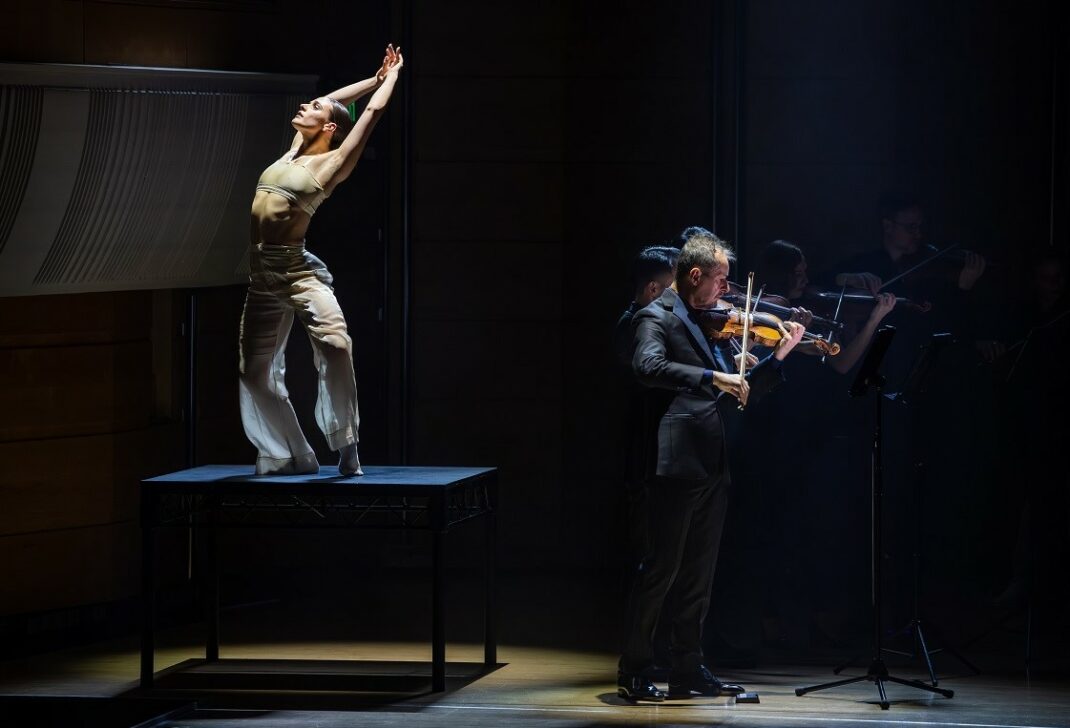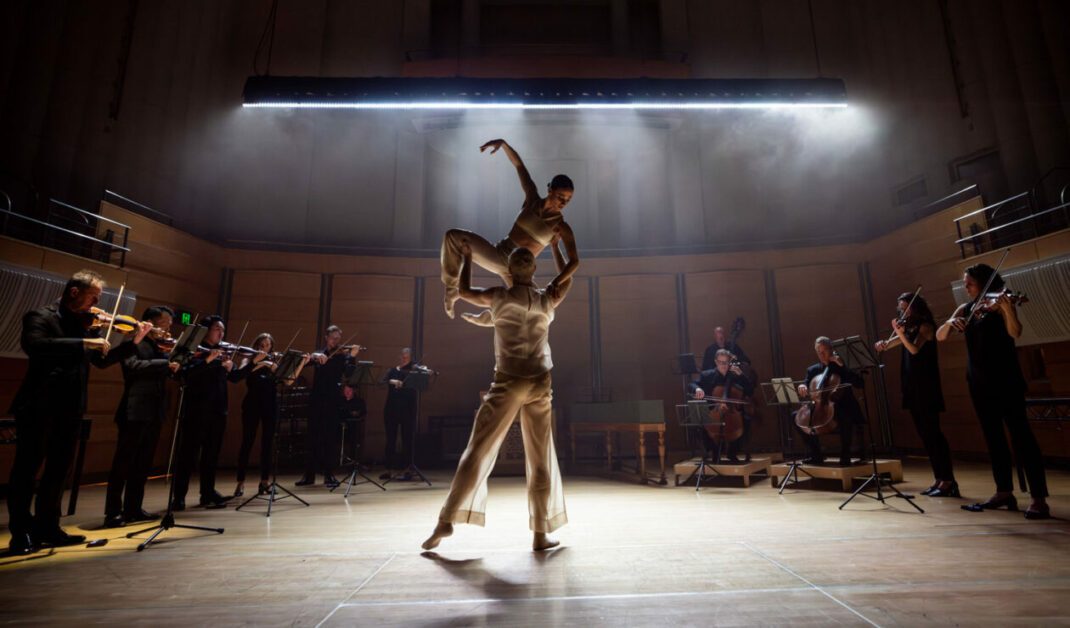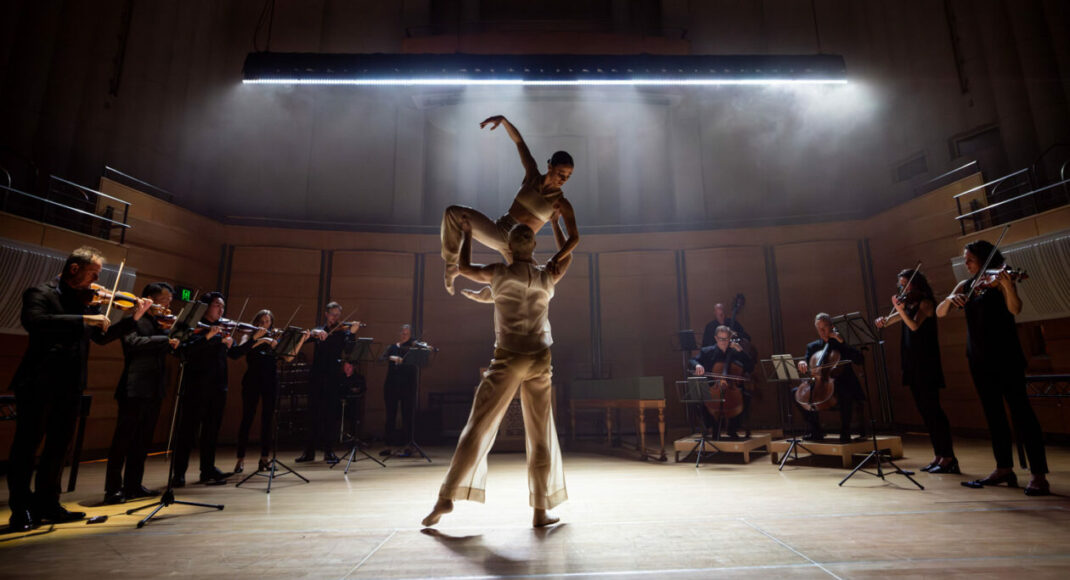17 August 2024. Llewellyn Hall, Canberra
Below is a slightly enlarged version of my review of Silence & Rapture published online by Canberra’s CityNews on 18 August 2024. The CityNews review is at this link.
The Australian Chamber Orchestra (ACO) has an admirable history of staging productions with dance companies in which both musicians and dancers perform onstage, with artists of each genre reflecting the work of the other in some way. My first recollection of this kind of collaborative endeavour goes back to 1998 when the ACO joined with a small contingent of dancers from the Australian Ballet, then under the direction of Ross Stretton, to present the Stravinsky/Balanchine ballet, Apollo. Since then there have been several collaborations between the ACO and Sydney Dance Company. Silence & Rapture is their most recent joint initiative.*
Directed by Richard Tognetti, Silence & Rapture presented a series of compositions by two composers—J. S. Bach and Arvo Pärt—whose works are years apart but were so expertly curated on the program that they fell together seamlessly. Program notes explained the narrative that was behind the selection. It followed ‘the path of a Lutheran metaphor … the world as a pendulum swinging downward, from the natural world of Hope and Temptation (Garden of Eden), down to Tragedy and Passion (Garden of Gethsemane), then upward again to Resurrection and Redemption (Garden of Heaven).’ The ACO musicians were joined by countertenor Iestyn Davies and two Sydney Dance Company artists, Emily Seymour and Liam Green, who performed the choreography of Rafael Bonachela.
Every aspect of the show was superbly executed by every single artist, with a standout performance of the Prelude from Bach’s Suite for Solo Cello in C Major from ACO’s principal cellist Timo-Veikko Valve. Apart from an impeccable transmission of the sound of the music, Valve the man could scarcely be separated from his instrument so involved was he, in a bodily sense, in transmitting the notes across the stage space and into the auditorium. While Valve’s involvement in this way was unforgettable, most of the ACO musicians also showed their intense commitment with a similar physical connection with their instrument during performance.
The dancers also stood out for their performance of Bonachela’s highly complex movement. Bonachela needed to restrain his choreography to an extent, given the small space in which the dancers could perform. But he showed his skill and, in addition to a focus on complexity, which often reflected the complexity of the music, he had the dancers at times performing solos on two small tables on the edges of the stage space. There were brief moments too of unison dancing involving Seymour and Green and I am always impressed by the way Bonachela turns to unison work, and how his dancers respond so beautifully.

But the truly outstanding feature of Silence & Rapture was the theatricality that permeated the evening, especially in the use of the stage space. Apart from the two cellists and Chad Kelly, who played organ and harpsichord, all the musicians stood for the entire performance (how did they do it?) and formed a semi-circle onstage. They provided a focused performing area for the dancers and countertenor, who constantly interacted with each other, with the countertenor occasionally joining the dancers in performing Bonachela’s choreography.
Then there was the input from well-known lighting designer Damien Cooper. His design added colour to the production, and darkness sometimes when the musicians were practically hidden but still playing. His design also highlighted certain moments, including the cello solo by Valve, and a moment towards the end when the two dancers mounted a rise at the centre back of the stage to present the ‘upward swing’ to ‘Resurrection and Redemption’.
When I look back at the Apollo collaborative event of 1998 (and re-read my less than positive review of that performance) I wonder whether the success of Silence & Rapture reflects the fact that in this case the dance was made for the music, which had been specifically selected and put together. The show thus had an originality, a presentation that had not existed previously, an originality that was not present in what was put together in 1998? Whatever the reason, in its one-night-only performance in Canberra, Silence & Rapture was a five-star show.
Michelle Potter, 18 August 2024
* It is of course not uncommon for dance companies and composers to work together—even working onstage together is relatively common. This review simply concerns the collaborative efforts of the ACO, while not dismissing other such efforts.
Featured image: Sydney Dance Company’s Emily Seymour and Liam Green (centre) with musicians of the Australian Chamber Orchestra in Silence & Rapture. Photo: © Daniel Boud


This sounds like a breathtaking experience – for performers and audience alike. Lucky those who could attend the single performance, and I’m very sorry I wasn’t among them.. I hope there was a capacity audience present. At the very same moment we were listening to Orchestra Wellington play Stravinsky’s le Baiser de la Fée, but we had to imagine the dance for that ourselves, making do with only half the art.
Yes, Llewellyn Hall was packed! It has a seating capacity of 1335 so it’s not huge but bigger than most other places in Canberra.
Half the art happens all the time unfortunately!